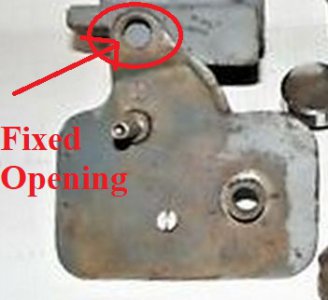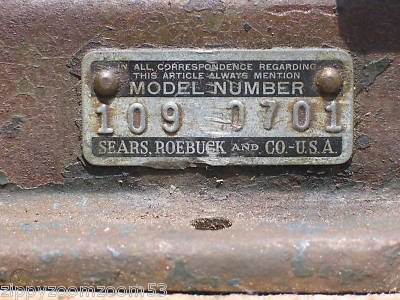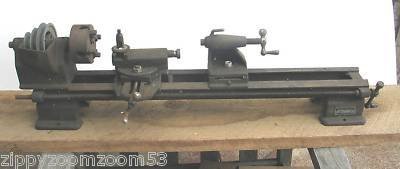- Joined
- May 21, 2022
- Messages
- 46
As many of you know I am rebuilding a 109.0703 long bed that had been stripped of all it's gears. The biggest issue I had to resolve is why there was no pin hole at the gear end of the lead screw.
Here's a top view of a dirty lead screw that HAS the pin but mine is missing:
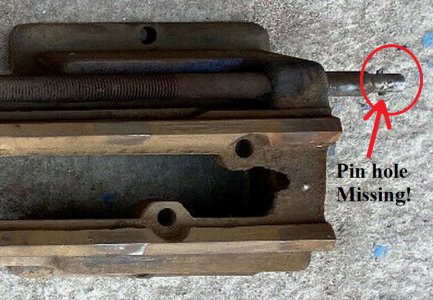
This type bushing (with a hole) slides over the end of the lead screw and a SP-320 No. 0000 taper 1/2" pin is driven through and this makes an attached gear turn the lead screw:
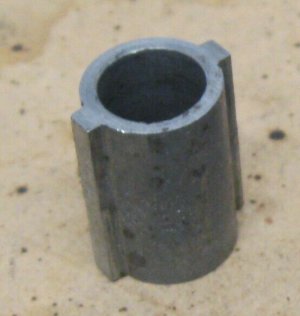
At 2:20 you can see the bushing being removed in this video:
So why does my 109.0703 not have a hole in the lead screw for the taper pin? This has bothered me for a couple of weeks. Another issue is that when I fitted the plate (bought off of eBay) that holds the gears, the headstock was missing the upper screw hole (under the spindle gear) for the bolt (above video at 2:01) so I had to drill a hole for the bolt.
Yesterday while looking for a casting number on my lathe bed I discovered why these issues were present. Looking at the Craftsman info tag I discovered that I have a 109.0702 not a 109.0703!!!!!!!!!!
Yes, a BFO!!! (Blinding Flash of the Obvious). I can't read. How I thought I had a stripped 109.0703 when in fact, it is the 109.0702 that NEVER had any gears installed is beyond me. Moral: double check those model numbers. Ugh! Dumb!
So now here's my dilemma.
1. Do I drill a straight hole or a tapered hole?
2. If a tapered hole, what bit do I use and where do I get one? The specs for the No. 0000 1/2" tapered pin are:
Large end: 0.109"
Small end: 0.099"
McMaster-Carr Part # 98390A069

 www.mcmaster.com
www.mcmaster.com
3. What is the proper tool to use to set the pin in the hole & pein over the top of the pin?
Thanks all!
Tony
Here's a top view of a dirty lead screw that HAS the pin but mine is missing:

This type bushing (with a hole) slides over the end of the lead screw and a SP-320 No. 0000 taper 1/2" pin is driven through and this makes an attached gear turn the lead screw:

At 2:20 you can see the bushing being removed in this video:
So why does my 109.0703 not have a hole in the lead screw for the taper pin? This has bothered me for a couple of weeks. Another issue is that when I fitted the plate (bought off of eBay) that holds the gears, the headstock was missing the upper screw hole (under the spindle gear) for the bolt (above video at 2:01) so I had to drill a hole for the bolt.
Yesterday while looking for a casting number on my lathe bed I discovered why these issues were present. Looking at the Craftsman info tag I discovered that I have a 109.0702 not a 109.0703!!!!!!!!!!
Yes, a BFO!!! (Blinding Flash of the Obvious). I can't read. How I thought I had a stripped 109.0703 when in fact, it is the 109.0702 that NEVER had any gears installed is beyond me. Moral: double check those model numbers. Ugh! Dumb!
So now here's my dilemma.
1. Do I drill a straight hole or a tapered hole?
2. If a tapered hole, what bit do I use and where do I get one? The specs for the No. 0000 1/2" tapered pin are:
Large end: 0.109"
Small end: 0.099"
McMaster-Carr Part # 98390A069
McMaster-Carr
McMaster-Carr is the complete source for your plant with over 595,000 products. 98% of products ordered ship from stock and deliver same or next day.
3. What is the proper tool to use to set the pin in the hole & pein over the top of the pin?
Thanks all!
Tony

